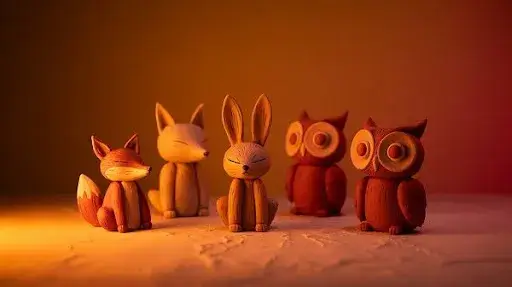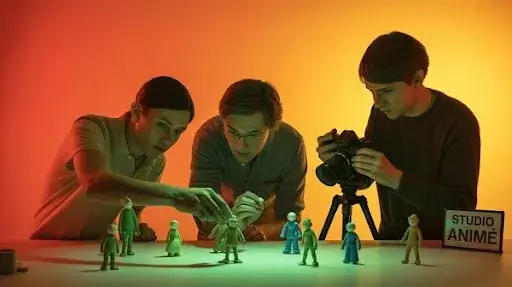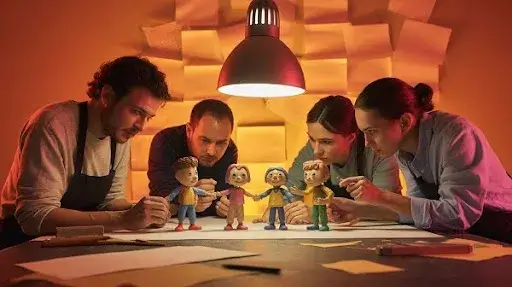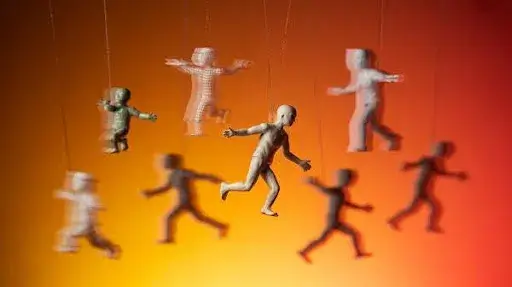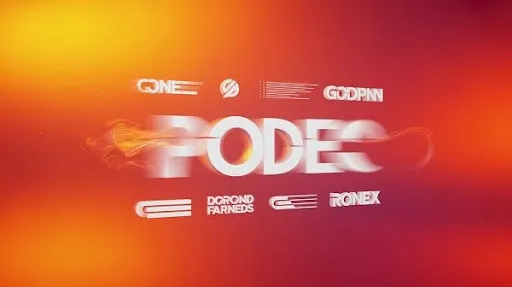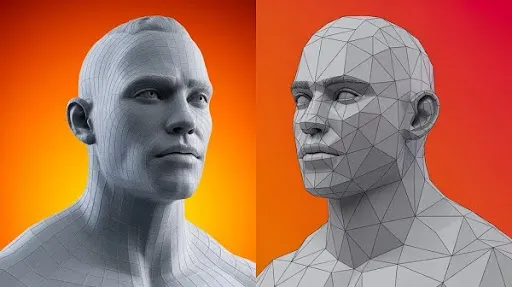Stop motion animation is one of the most creative ways to bring ordinary objects to life on screen. With the right camera setup, patience, and a keen eye for detail, this unique animation style transforms still images into captivating moving sequences. From early cinematic experiments to modern-day commercials, stop motion has remained a timeless art form. At Prolific Studio, our animation services highlight the magic of this technique, blending creativity with precision to deliver visually stunning results.
What Is Stop Motion Animation?
Stop motion animation is often described as a flipbook brought to life. Instead of relying solely on drawn or digital frames, it involves physically manipulating objects and photographing them one frame at a time. When played in sequence, the images create the illusion of independent movement, making objects appear as though they are alive.
Behind its simplicity lies an incredible amount of detail. Every frame requires careful positioning, lighting, and timing. Although it may not carry the same Hollywood-sized budgets as CGI or 3D product animation services, the results are undeniably impactful. Stop motion animation has earned its place as a celebrated art form, from award-winning films to memorable TV series.
At Prolific Studio, we specialize in different animation services—ranging from 2D and 3D animation to stop motion techniques—tailored to your brand’s storytelling needs. Whether it’s for commercials, explainer videos, or product showcases, we bring stories to life in a way that feels authentic and visually engaging.
Why Stop Motion Stands Out
- Unique Visual Style: Unlike digital animation, stop motion carries a handcrafted look that connects with audiences on a deeper, more personal level.
- Creative Versatility: From clay figures and paper cutouts to product demonstrations, the technique adapts to almost any idea.
- Proven Success: Decades of acclaimed films, advertisements, and branded content prove that stop motion remains one of the most engaging storytelling methods.
Prolific Studio combines artistic expertise with modern production techniques, ensuring that your stop motion project is both innovative and effective. Whether you’re looking for explainer video services, 3D animation services, or specialized stop motion animation, our team delivers results that stand out.
Types of Stop Motion Animation
Object Motion
No big budget? No worries! Everyday objects can become your characters. Just grab what’s around you and bring it to life frame by frame.
Examples: The Humpty Dumpty Circus (1898)
Claymation
Model your characters and props using clay to create imaginative, flexible, and expressive worlds. This style allows endless creativity in both design and storytelling.
Examples: Morph, Wallace & Gromit
Pixilation
In this technique, real actors are transformed into stop-motion subjects. They pose for each shot as if they were puppets, creating a quirky and surreal effect.
Examples: Hôtel électrique (1908)
Cutout Motion
Design your characters and backgrounds from paper or flat materials, then animate them in a two-dimensional setup—often shot from above. It’s a cost-effective yet highly expressive style.
Examples: The Spirit of Christmas (Matt Stone and Trey Parker)
Puppet Animation
When you want more depth and sophistication, puppet animation is the way to go. Intricately crafted puppets with detailed joints allow for highly expressive storytelling.
Examples: Coraline, Kubo and the Two Strings
Silhouette Animation
This technique adds a dramatic flair by using backlit cut-outs. Characters appear as striking silhouettes, creating a mysterious and artistic atmosphere.
Examples: The Adventures of Prince Achmed (1926), Papageno (1935)
At Prolific Studio, we specialize in bringing all these forms of stop motion animation to life. Whether you’re looking for playful claymation, dramatic silhouettes, or high-end puppet animation, our team has the creativity and expertise to craft unforgettable stories.
History of Stop Motion Animation
The rise of digital cameras and smartphones has made stop motion accessible to nearly everyone today. What was once a painstaking craft reserved for professionals with large budgets has now become a creative outlet found in households around the world. However, the story of stop motion animation stretches back more than a century, beginning with groundbreaking works that paved the way for modern techniques.
The Humpty Dumpty Circus (1898)
Often cited as the very first stop motion film, The Humpty Dumpty Circus was created by J. Stuart Blackton and Albert E. Smith. Using simple children’s toys, they brought to life the hidden world of circus performers. Decades before Woody and Buzz from Toy Story, this pioneering project captured the imagination of audiences and hinted at the magic of bringing inanimate objects to life.
Władysław Starewicz and the 1910s–1920s
Polish animator Władysław Starewicz revolutionized the art form by using actual insects as his characters. In Lucanus Cervus (1910), he taxidermied beetles and transformed them into tiny actors that shocked and amazed audiences. Many believed he had somehow trained the insects to walk upright and handle props—an incredible illusion for its time.
Willis O’Brien and the Age of Dinosaurs
In 1925, Willis O’Brien showcased his talents with The Lost World, adapted from Arthur Conan Doyle’s novel. The film combined clever editing and groundbreaking effects to depict living dinosaurs alongside human explorers. O’Brien later cemented his legacy with the unforgettable animation of King Kong (1933), which remains a milestone in cinema history.
Ray Harryhausen and the Golden Era
Mentored by O’Brien, Ray Harryhausen became one of the most influential stop motion artists in film. His works such as The Beast from 20,000 Fathoms (1953) and 20 Million Miles to Earth (1957) brought thrilling creatures to the silver screen, defining the look of mid-century science fiction and fantasy. His later projects, including The Golden Voyage of Sinbad (1973) and Clash of the Titans (1981), remain classics that inspired generations of filmmakers.
Aardman Animations and Pop Culture
Stop motion continued to evolve and entered mainstream entertainment thanks to studios like Aardman Animations. Their clay character Morph became a household name on British television, charming audiences with his playful antics. Aardman also made history in the music industry by creating the stop motion effects in Peter Gabriel’s Sledgehammer video, which became one of the most iconic music videos of the 1980s.
Stop Motion Today
Today, stop motion is everywhere—from feature films and commercials to YouTube channels and social media reels. Modern technology makes it easier than ever to experiment with this craft while still honoring its long, detailed tradition. At Prolific Studio, we understand the timeless charm and artistry of stop motion. By combining classic techniques with cutting-edge production methods, we bring brands, characters, and stories to life in ways that captivate audiences across the globe.
How to Make a Stop Motion Animation
Creating a stop motion animation today is much simpler than it was for the pioneers of the craft. Unlike earlier times when expensive equipment was a must, you can now bring your own stop motion video to life with just a few accessible tools. At Prolific Studio, we believe anyone can create imaginative stop motion stories with the right approach.
What You’ll Need for Stop Motion Animation
Before you dive into the process, here are the essentials you’ll want to have on hand:
Digital Camera
A DSLR or mirrorless camera works best, but even a smartphone camera can capture great results. The sharper the image quality, the more professional your final animation will look.
Stand or Mount
Keeping your camera perfectly still is critical for smooth animation. A tripod or stand ensures there’s no shaking between shots. The good news? Affordable mounts are easy to find.
Editing Software
You’ll need editing software that allows you to arrange images into a sequence. There are free and paid options available for both desktop and mobile. Even your smartphone can work in a pinch.
Objects to Film
This is where your creativity shines. You can use crafted props, clay models, or even household objects to bring your story to life. Whether you prefer a detailed backdrop or a playful, everyday setting, your imagination sets the stage.
How to Shoot in Stop Motion
The process itself is straightforward, but attention to detail makes all the difference. Here are key steps to follow:
Frame Your Subject Carefully
Set up your scene so everything you want in the shot fits neatly within the frame. Keep distractions or unwanted objects out of view, as even small intrusions can break the illusion.
Control the Lighting
Consistency is everything. Work in a space where you have full control of lighting—like under a desk lamp for 2D animation or softbox lights for larger scenes. Any variation in light levels will create flickers in your final animation.
Keep the Camera Steady
Once your camera is in place, avoid moving it until you’ve completed your sequence. Use a remote shutter or timer to take each frame, reducing the risk of accidental shakes.
Choose Your Frame Rate
Decide how smooth or stylized you want your animation to look. A standard film rate is 24 frames per second, which means 24 individual shots for each second of movement. You can take fewer shots for slower, deliberate motion, or more for fast, fluid movement.
Edit and Finalize
Import your images into your chosen editing software and arrange them in sequence. This is where you can adjust pacing, add effects, and include sound or music to bring your stop motion to life. With some patience and creativity, you’ll have a unique animation ready to share.
Stop Motion Animation Techniques
Stop motion animation may seem simple at first glance, but what truly makes it magical is the creativity of animators and the unique ways they bring their subjects to life. Over the years, different techniques have emerged, each adding fresh energy to this timeless art form. At Prolific Studio, we celebrate these diverse approaches and the charm they bring to storytelling.
Object Motion
Object motion gives movement to everyday items without requiring the animator to build them from scratch. One of the earliest known examples is The Humpty Dumpty Circus, where toy animals became the stars of the show. This technique proves that even ordinary objects can shine with the right imagination.
Claymation
Claymation uses clay sculptures that are carefully reshaped and photographed frame by frame. Some of the most beloved claymation examples include Wallace & Gromit, created by Aardman Animations, and the classic holiday specials from Rankin/Bass. These projects highlight how expressive and versatile clay figures can be when guided by talented animators.
Pixilation
Pixilation applies stop motion techniques to real people. Actors move in small, controlled increments between frames, often resulting in quirky and surreal effects. A well-known example is the music video Latchmere by The Maccabees, which introduced audiences to a fresh and playful take on this method.
Cutout Motion
Cutout motion uses two-dimensional cutouts, typically from paper, which are animated frame by frame. One famous example is the pilot episode of South Park, which relied on this painstakingly detailed process. Though challenging, it showed how simple materials can be turned into groundbreaking animation.
Puppet Animation
Puppet animation involves handcrafted puppets designed for stop motion movement. Studios like Laika have mastered this technique, producing visually stunning films such as Coraline and Kubo and the Two Strings. Puppet animation offers a distinctive, textured look that continues to captivate audiences.
Silhouette Animation
Silhouette animation combines cutouts with light and shadow, creating striking visuals through contrasting outlines. Popularized in the 1920s, it was perfected by filmmaker Lotte Reiniger, who made over 70 films using this method to bring folk tales to life. The result is both enchanting and visually unique.
Stop motion animation FAQs.
What do you need for stop motion animation?
Thanks to modern household technology, creating stop motion animation is easier than ever. With just a smartphone camera and a stable stand, you can start capturing your frames. To improve quality, it’s helpful to have consistent lighting and a variety of props to bring your story to life. Beyond the equipment, you’ll need patience and discipline—stop motion requires many small adjustments and careful attention to detail, frame by frame. At Prolific Studio, we always emphasize that creativity and persistence matter just as much as the tools you use.
What are the four types of stop motion animation?
Although there are several forms of stop motion, the most recognized include:
- Object-Motion – Using everyday objects and bringing them to life through movement.
- Claymation – Sculpting characters or scenes from clay and animating them frame by frame.
- Pixilation – Using real people as the subjects of stop motion.
- Cutout-Motion – Animating flat materials such as paper, cardboard, or fabric.
Other styles include Puppet Animation, where handcrafted puppets are animated, and Silhouette Animation, which creates dramatic shadow effects. At Prolific Studio, we explore all these methods to match the creative vision of each project.
How many pictures does it take to make a one-minute stop motion?
Stop motion relies on capturing multiple frames to create smooth movement. Standard film speed is 24 frames per second, which means a one-minute stop motion animation would typically require about 1,440 frames. However, animators often use techniques like shooting “on twos” or “on threes,” meaning each frame is repeated two or three times. This reduces the total number of unique frames needed while still achieving natural motion. Faster movements, on the other hand, may require single-frame adjustments. At Prolific Studio, we combine these techniques to balance quality with efficiency in every stop motion project.
Related Articles:

